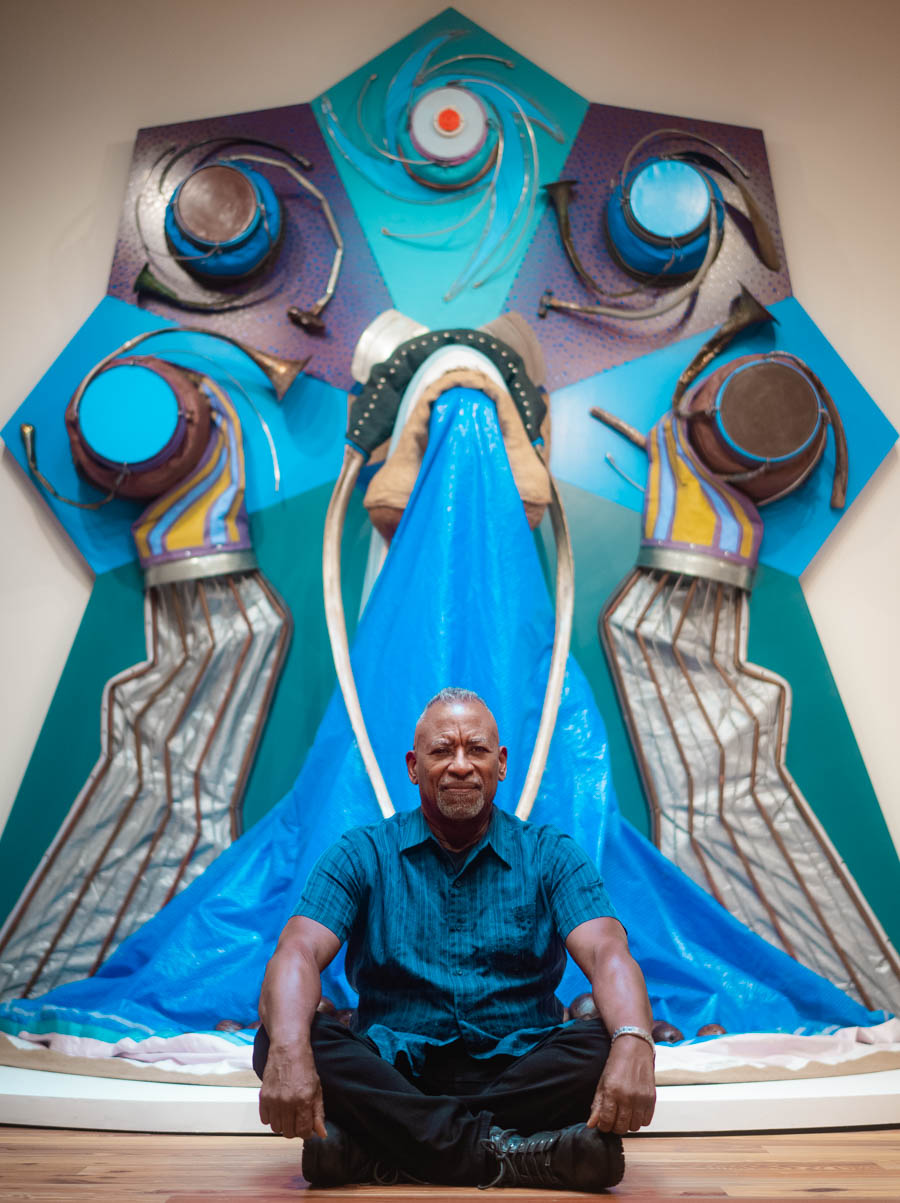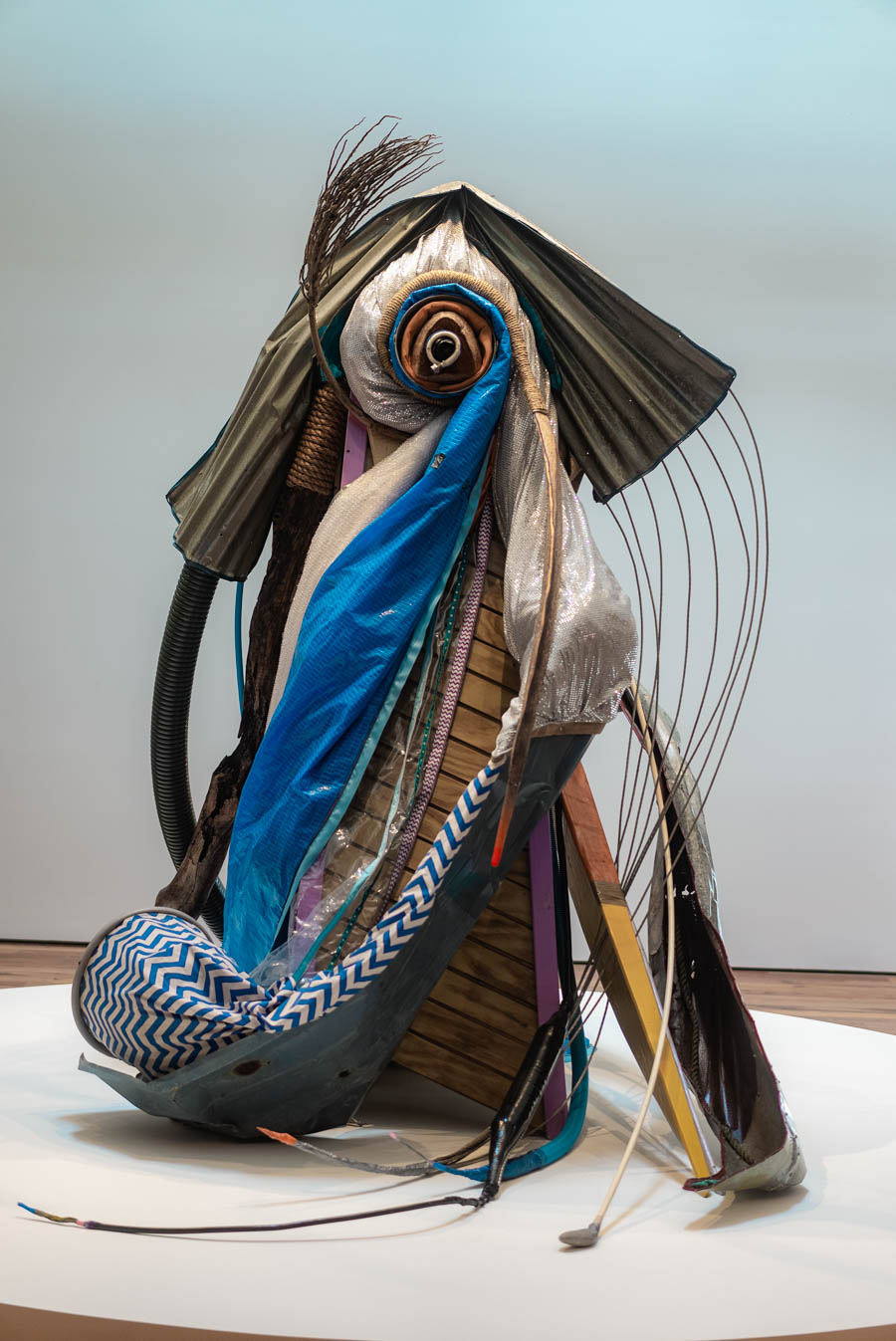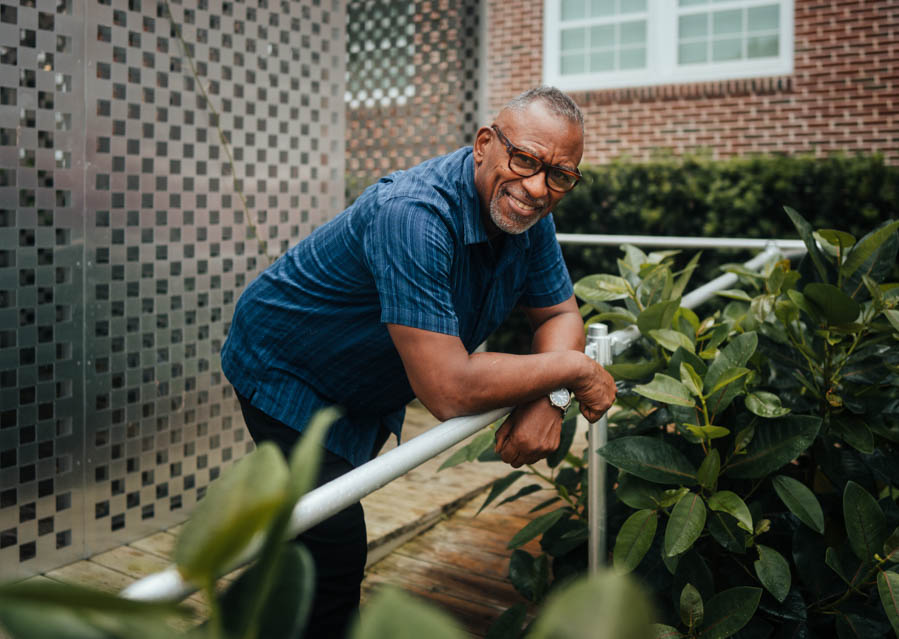If you were asked to catalog your life into a series of objects, could you? What pieces of your childhood would you bring along, what talisman could you confidently hold up as a personification of all that you are? It’s a difficult decision, because objects, almost inherently, carry meaning. Some carry more than others. Some don’t carry any at all until one day, they finally do. How do you make that choice? For Puerto Rican artist, Daniel Lind-Ramos, that choice was made for him on September 20th, 2017, when Hurricane Maria made landfall on Puerto Rico.
It was made for him during the ensuing 84 days spent without power, cut off completely from the outside world, while his own descended into chaos. It was made for him while he waded chest-deep through the flooded streets in his hometown of Loiza, sifting through the wreckage of the storm. “In the middle of the night, while the hurricane was at its worst, we had heard through the radio that people here needed to abandon the area because of the flooding. The next morning, I was wondering how my studio would look as I was wading through the water — I saw an object floating nearby and I took it,” Daniel says. That object, a boat propeller, along with blue FEMA Tarps, palm tree fronds and coconut shells, became touchstones for the experience Daniel and his community had in the aftermath of Hurricane Maria.

ARTIST DANIEL LIND-RAMOS USES FOUND OBJECTS TO CREATE ASSEMBLAGES REMINISCENT OF THE EXPERIENCES AND SPIRIT OF HIS PUERTO RICAN COMMUNITY.
Daniel did not choose the objects that define him, yet even still, he’s chosen to share them with us. Las Tres Marias, will feature three assemblages created from natural and manufactured materials, collected in the aftermath of Hurricane Maria, that bring to light the impact the storm had on Puerto Rico. Daniel introduced the series at the 2019 Whitney Biennial, with his sculpture Maria-Maria, after which the Sarasota Art Museum first connected with him and in the ensuing years, came to this exhibit. “At first glance these found objects might look like miscellaneous elements that are part of a sculpture, they’re meant to bring a physical presence to a lot of the experiences and memories that the majority of us didn’t live through with the devastation of Hurricane Maria. They beautifully make something immaterial, like a memory, real in a space that we can reflect on now,” says Emory Conetta, assistant curator at Sarasota Art Museum.

'LAS TRES MARIAS' WILL BE ON DISPLAY AT THE SARASOTA ART MUSEUM THROUGH AUGUST 7TH, 2022 AT THE SARASOTA ART MUSEUM.
Las Tres Marías will feature an existing work, Maria de los Sustenos, in addition to two assemblages created specifically for this exhibition, Bano de Maria and Maria Guabancex. Although the exhibition was originally slated to showcase just Maria de los Sustenos, the natural light and spacious layout of the museum’s Tower Gallery prompted SAM to propose the idea of two additional works to Daniel. “The best part of being a contemporary museum is that we get to work with living artists,” says Conetta.
Daniel, who had been mulling over these two specific works since 2018, jumped at the idea. In turn, each assemblage is constructed from different found objects and focuses on a different era of Puerto Rico — from the island’s indigenous roots and history of colonialism to its position in the modern world. Bano de Maria or the Bath of Mary is a relief that features the first object Daniel collected in the hurricane’s wake—a boat propeller, floating alongside him in the flood waters of Loiza—at its top and a water basin at the foot of the assemblage. “The water was almost above my chest when I found it,” says Daniel. The assemblage focuses on water — not just on the ocean’s torrential flooding, but also water as a pathway of changing existences. Just like the majority of hurricanes that hit Puerto Rico, the majority of slaves that came to the island also came from West Africa.
The title of the work also directly implies the warming or heating of water — the increasing temperatures of the ocean being the main contributor to the increased size and frequency of hurricanes. “Having just been struck by two hurricanes, Irma and Maria, I was thinking about global warming and the consequences of such. The name, Bano de Maria, paid homage to that: Maria—the mother of Jesus, Hurricane Maria—the destructor, and Maria the Jewess—the inventor of the double boiler, an apparatus used for heating water,” attests Daniel.
The other assemblage made specifically for the exhibition, Maria Guabancex, is in the round and addresses both Daniel’s personal history and the island’s indigenous history with hurricanes. The title is in reference to the Taino deity, Guabancex, who the Taino believed to be responsible for punishing them with the brutal storms. The assemblage uses palm fronds as a reference to the barraca, a type of structure where Daniel weathered storms as a young boy. Debris from the pieces of his neighbor’s home—a blue FEMA tarp, corrugated metal and plastic—depict the moden destructive power of hurricanes and shoes under the assemblage pay homage to those who lost their lives in Hurricane Maria. “The name given by indigenous people, my first memories of surviving hurricanes, and the problem of homes that are built and do not survive the hurricane or houses that are built in places that aren’t supposed to be built, all came into play,” says Daniel. “I wanted to use new materials and old materials to illustrate the fact that the hurricane doesn’t discriminate — it can destroy all in its path.”
Maria de los Sustentos or Mary of Sustenance is another relief sculpture. This work commemorates how the people of Puerto Rico sustained themselves after the hurricane—how they survived, healed, and relied on one another for support. The main part the body is made out of a fishing net as many started catching their own fish during the power blackout. “We had no electricity, we had no water, so we had to start again with fire. You had to gather firewood and cook and fish for food from the river,” says Daniel. “It made us realize that we need to be with others, that’s the most important thing we can do after a disaster. I tried to build with that feeling.”
The very name of the exhibition, Las Tres Marías or the three Mary’s, seeks to examine another prevalent aspect of Puerto Rican culture—Catholicism. The cultural identity of the Virgin Mary, long seen as a figure of healing, protection and sustenance, now bore the same name as the most destructive storm in the island’s history. “Most of my neighbors, the roofs of their houses, disappeared after the hurricane. In time, you saw all of their roofs covered in blue tarps—you have Maria protecting and Maria destroying. It was an interesting dichotomy. Before Maria became a hurricane, it was an image of mother, protection, sustenance — even after the hurricane, you had those two feelings,” says Daniel.
Perhaps by repackaging the destruction that Hurricane Maria brought to his home into the form of a holy figure, Daniel can turn disaster into beauty. He can bring awareness to a tragedy, honor to the past,and healing to his community. He can share with the world the objects that at one time, were resemblant of heartbreak and chaos, but now are a symbol of the resiliency of his home.










